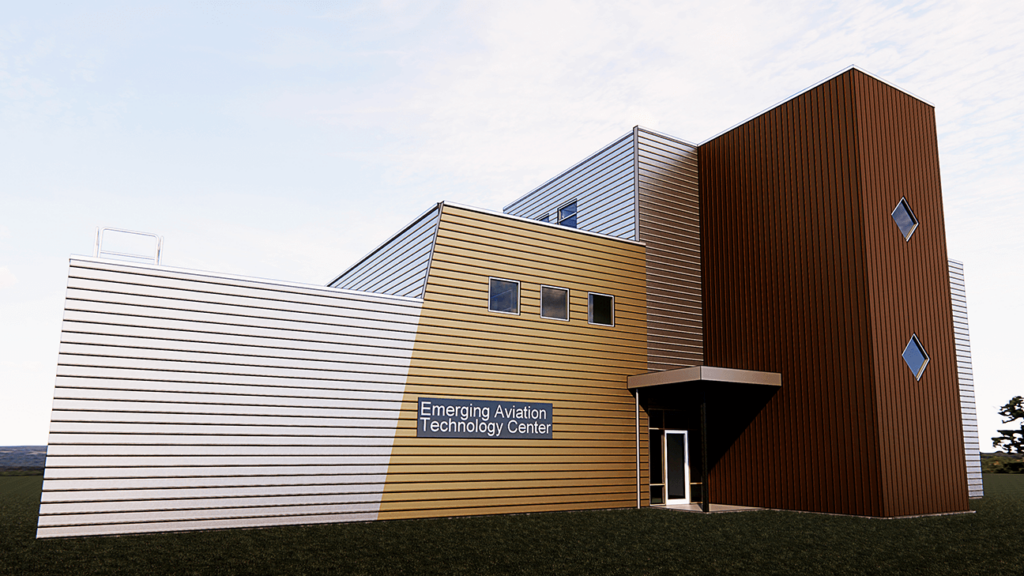Within a few years—and well before the next decade—a new generation of pocket aircraft will assume a significant role in commercial aviation. Generally referred to as Advanced Air Mobility (AAM) vehicles, they include piloted electric vertical take-off and landing (eVTOL) aircraft, as well as uncrewed aerial systems (UAS), which are typically drones. As with conventional aircraft, each new AAM system will have to navigate the vigorous certification process at the regulatory level prior to clearance for takeoff as revenue-generating passenger and cargo carriers.
For the Choctaw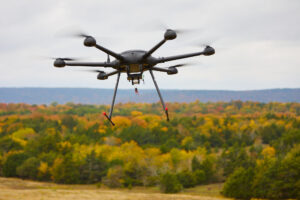 Nation of Oklahoma (CNO), that presented an opportunity. Getting involved with aviation and becoming a relevant player in a facet of the emerging AAM industry was seen as a pathway to economic and workforce development on its reservation. In 2016, the CNO approached Dr. James Grimsley to spearhead that effort, which led to the establishment of the Choctaw Nation Emerging Aviation Technology Center (EATC) as an AAM test range.
Nation of Oklahoma (CNO), that presented an opportunity. Getting involved with aviation and becoming a relevant player in a facet of the emerging AAM industry was seen as a pathway to economic and workforce development on its reservation. In 2016, the CNO approached Dr. James Grimsley to spearhead that effort, which led to the establishment of the Choctaw Nation Emerging Aviation Technology Center (EATC) as an AAM test range.
“About 10 years ago, the CNO tribal government purchased a huge swath of privately held property lying within the reservation’s 11,000 square mile boundaries,” said Grimsley, now CNO’s Executive Director of Advanced Technology Initiatives. “After considering alternative uses for the property, the decision was made to establish a test range, initially as a UAS test site.”
Located near the CNO tribal government headquarters in southeastern Oklahoma and commonly referred to as “the Daisy Ranch,” the EATC encompasses 44,600 acres and extends some 25 miles in length. The entire airspace over the property is accessible for flight testing.
“The test range incorporates a very large area where we can control the ground risk,” said Grimsley. “Except for the facilities, which are located on 35 acres along the south end of the property, there are no structures or people located there, so what we have is a large amount of safety infrastructure beneath the air space. At the same time, Oklahoma has a huge number of flying days.”
In 2018, the EATC opened its doors for business and in the summer of 2019 hosted its first drone test flight. It remains, as Grimsley described it, a work in progress.
“Currently, there are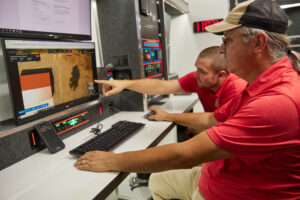 seven buildings onsite, including an operations center. The other six buildings include two hangars, plus workshops and lodging facilities. There are also two drone pads, with two more being built, along with a 50-by-50-foot helipad, with a second under construction,” Grimsley noted. “Two more, capable of accommodating large helicopters, are planned for construction within the next two years. Radio towers, radar installations, and other safety-related infrastructure are installed across the entire 44,500 acres.”
seven buildings onsite, including an operations center. The other six buildings include two hangars, plus workshops and lodging facilities. There are also two drone pads, with two more being built, along with a 50-by-50-foot helipad, with a second under construction,” Grimsley noted. “Two more, capable of accommodating large helicopters, are planned for construction within the next two years. Radio towers, radar installations, and other safety-related infrastructure are installed across the entire 44,500 acres.”
The CNO is also considering the addition of a landing strip to accommodate fixed-wing aircraft, but has not yet advanced to the decision-making phase.
October 2023 brought the groundbreaking of a new operations center. Slated for completion in January 2025, the three-story EATC Operations Center will encompass 6,387 square feet. Included will be office space; telemetry rooms; workrooms for training and development, drone maintenance, and mechanical repairs; as well as a conference lounge and observation deck.
The new building will replace the current operations center, which Grimsley reported will be dismantled. He added that another building focused on advanced prototyping is slated to open in July 2024.
“The Advanced Fabrication Center’s primary mission will be rapid fabrication projects, such as proof of concept systems, with some limited production capabilities,” Grimsley noted. “Larger manufacturing efforts would take place elsewhere on the CNO reservation. We will also have hangar and other space available for companies to lease, with lease terms based on individual business cases.”
The additional development has been underwritten largely by U.S. Government grants, specifically $4 million from the U.S. Economic Development Administration and $500,000 from the Department of Agriculture.
The CNO is partnered with uAvionix, a Bigfork, Montana-based avionics original equipment manufacturer (OEM), which has provided electronics supporting the training range since its opening in 2018. Grimsley calls uAvionix a “top innovator in aviation electronics infrastructure,” which includes communication radios, autopilot, and ground-based safety-related equipment. “They are a very innovative team focused on the control and safety of drone operations,” he remarked.
As an example, uAvionix announced last June that it received Federal Communications Commission (FCC) approval—in coordination with the Federal Aviation Administration (FAA)—to operate its SkyLink C-Band Command and Control (C2) radios for Beyond Visual Line of Sight (BVLOS) operations at the CNO test site.
According to a June 2019 press release, the radios operate on aviation-protected C-band frequencies and will be controlled by uAvionix’s SkyLine cloud-based C2 network management solution that combines fleet management, network health monitoring, detect & avoid, and seamless make-before-break roaming between multiple radio networks and ground stations. In addition, uAvionix is providing its Skylink Airborne radios and SkyStation ground radios.
At the CNO test center, a total of four independent C-band radios are deployed, all networked through SkyLine. Each link in the network is continually monitored to determine the best one to initiate command and control. At the same time, detect and avoid (DAA) data from ground-based sensors is delivered by the C-band radios to the AAM system flying the test range.
In fact, operating at the EATC on August 29, 2023, uAvionix completed the first true Beyond Visual Line of Sight (BVLOS) flight in non-segregated airspace using aviation protected C-Band in the United States.
“A lot of the technology we have been developing over the past 18-24 months and installed at the CNO test range is new. The most notable is the SkyLine command and control system,” remarked Christian Ramsey, Managing Director of uAvionix. “It is the first one to combine SATCOM, LTE cellular technology, and the ISM (Industrial, Scientific, Medical) bands into a single system.”
Ramsey also pointed out that since uAvionix’s partnership with the CNO two years ago in the FAA’s BEYOND program, the company has achieved two FAA approvals for BVLOS applications. “We built the system on the CNO test range, and, with the approvals, can replicate it elsewhere,” he said.
Preparation for BVLOS, however, commenced in 2019, when the CNO was the first Native American tribal government to receive a Public Aircraft Operations Certificate of Authorization (COA) from the FAA, which authorizes a public operator to engage in specific unmanned aerial system activity. At the same time, the CNO UAS test range was designated by the U.S. Department of Transportation as one of eight sites for the FAA’s UAS BEYOND program. (The other BEYOND sites are operated by the Kansas Department of Transportation, the Memphis-Shelby County Airport Authority, the Mid-Atlantic Aviation Partnership in Virginia, the North Carolina Department of Transportation, the North Dakota Department of Transportation, the City of Reno, and the University of Alaska Fairbanks.)
As described on the CNO website, BEYOND is a follow-on effort to the FAA’s UAS Integration Pilot Program (IPP). Under the new program, the CNO will continue to work with industry and the FAA to test and validate the safety of advanced operations for drones at its flight test range.
BEYOND will also address specific challenges remaining at the closure of the UAS IPP and focus on such issues as the necessary steps to facilitate scalable and economically feasible BVLOS operations, community feedback related to UAS operations, and the economic impact of UAS operations.
“As part of the FAA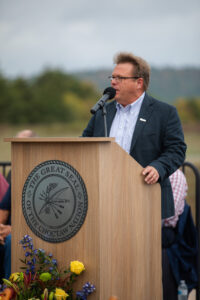 UAS BEYOND program, CNO has worked closely with the FAA and other agencies to more fully incorporate UAS into the National Airspace System and help deliver the clear safety benefits and operational efficiencies it promises,” Grimsley said.
UAS BEYOND program, CNO has worked closely with the FAA and other agencies to more fully incorporate UAS into the National Airspace System and help deliver the clear safety benefits and operational efficiencies it promises,” Grimsley said.
To date, some 30 organizations have used the EATC facilities. While the Center’s focus has been exclusively on uncrewed systems to date, Grimsley reported that testing of piloted AAM vehicles is imminent. “We are already working with crewed AAM developers and hosting AAM companies in preparation for initial operations,” he said.
Asked about any prerequisites that AAM system developers must satisfy to use the EATC range, Grimsley stressed that it is open to all, with few requirements upfront.
“The most important (prerequisite) is the capability to understand what is required to carry out a safe operation,” he noted. “That means having a pool of people with knowledge of the FAA regulations and an in-depth understanding of safety-related procedures right out of the box.”
The CNO, Grimsley pointed out, has established a partnership with NATA, which he deemed “essential to broaden interaction and collaboration with the wider aviation industry.” Following discussions initiated with NATA in the summer of 2023, a Memorandum of Understanding (MOU) between the Association and the CNO was signed the following October.
“This MOU establishes a mutually beneficial, collaborative partnership with The Choctaw Nation of Oklahoma, with regard to the further development of the AAM/UAM sector,” explained Keith DeBerry, NATA’s Chief Operating Officer. “This partnership aims at maturing the overall AAM/UAM concept: developing an air transportation system that moves people and cargo between local, regional, intra-regional, and urban locations not previously served, or under-served, by commercial aviation by using innovative aircraft, technologies, infrastructure, and operations.”
DeBerry pointed out that in 2022, NATA formed its Advanced Air Mobility Committee to ensure a unified approach to modernization of infrastructure and operational framework for the coming era of AAM.
“NATA sees a natural nexus between existing Part 135 operators, general aviation airports, Fixed Based Operator (FBO) infrastructure, and AAM innovation. Urban and rural general aviation airports offer ideal spaces to introduce eVTOL technology, and NATA members are preparing to support, maintain, and operate this next generation of aircraft. Although most FBOs will not see eVTOLs in the early years, it is important for FBO leaders to be proactive in preparing to support these emerging technologies in the long term,” he stated.
DeBerry added that the potential business opportunities created by AAM will, for example, include repair facilities, as maintenance ultimately transitions from the OEMs to Part 145 repair stations.
“There is a huge wave of OEMs already, and they are pushing the boundaries. So, getting back to the question of who will maintain all these aircraft, we really haven’t talked about this. We will, however, have to do so eventually,” DeBerry stated.
He also noted that Part 135 operators have expressed an interest in drone and air taxi services using AAM aircraft, as the market for this is ripe.
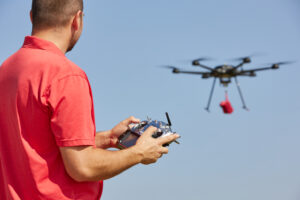 In the meantime, the EATC is proving to be far more than a test range for AAM, according to Grimsley. “It has already had a beneficial impact on the community, especially with regard to reinvigorating STEM (Science, Technology, Engineering and Math) education in the area,” he said. “Going forward, it will be a part of the future ecosystem for development and production of advanced aviation technology, which will include new industrial infrastructure in the area. This has been far more successful than we ever anticipated.”
In the meantime, the EATC is proving to be far more than a test range for AAM, according to Grimsley. “It has already had a beneficial impact on the community, especially with regard to reinvigorating STEM (Science, Technology, Engineering and Math) education in the area,” he said. “Going forward, it will be a part of the future ecosystem for development and production of advanced aviation technology, which will include new industrial infrastructure in the area. This has been far more successful than we ever anticipated.”

